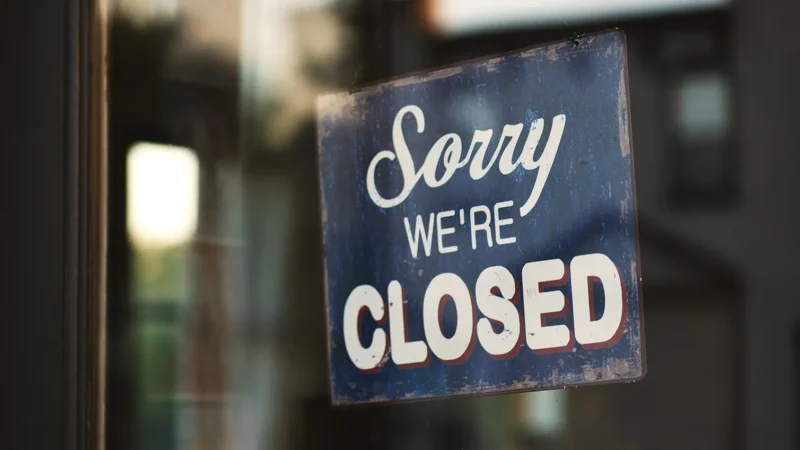How Reserve Funds Work
- April 1, 2021
A reserve fund is essentially an amount of money that’s set aside for a particular purpose. You can think of reserve accounts as being akin to a savings account or other liquid asset. The most common variety of these funds that merchants deal with is the percentage of processing volume that payment processors and acquiring banks will hold to protect against chargeback instances or to cover other financial obligations.
You’ll need a reserve fund if you want to accept credit card and debit card payments, which require a sponsoring bank to process. You’ll also have reserves if you want to accept these payments through options like PayPal. The reserve fund acts as a sort of security deposit that protects the bank in case of chargebacks against you or any other issues that may arise. The amount you’ll need to place in reserves may be higher if you’re considered a high-risk merchant or if the bank is uncomfortable processing your payments for any reason.
Banks and payment processors set the amount that needs to be placed in a reserve fund as a percentage of the processing volume of your account. The exact rate often depends on how risky the bank believes your business to be. If you’re considered a high-risk merchant, or if the bank is uncomfortable processing your payments for any reason, you’ll probably need to place a significant amount in reserves.
However, you don’t need to blindly accept the fund rate required by the bank or PayPal. Instead, you can dispute that rate or the chargebacks and other factors that have labeled you as a high-risk merchant.
Electronic payment litigation is extremely complex, and if you come into disputes with an acquiring bank, an independent sales organization, believe you’ve been placed on the MATCH list unfairly, or have any other issues, our experts at Global Legal can help.

Understanding Rolling Reserves
Any business that wants to accept electronic payments from popular credit card brands like American Express and MasterCard needs to work with an independent sales organization (ISO) and their financial institution’s automatic clearing house (ACH) to set up the payment methods and procedures.
The most common reason for this account is to cover chargebacks. A chargeback occurs when a customer disputes a debit or credit charge, and it’s one of the most challenging aspects of finances for many businesses. The merchant account reserve fund covers these chargebacks for credit card payments to protect the acquiring bank. If there isn’t enough money in the reserve, then the business itself may become responsible for the payment, and this can quickly add up to debilitating levels of fees.
Since there’s usually a limitation on how many chargebacks are acceptable, merchants with excessive chargebacks may be placed on the MATCH list, effectively terminating their ability to open merchant accounts until they’re cleared. This can also happen as a result of data breaches of personal information or fraudulent activity.
What Is the MATCH List?
The Member Alert to Control High-Risk Merchants (MATCH) list is created and managed by MasterCard to compile information about vendors that accept credit cards. The intention is to track fraudulent merchants who have lost their right to process credit card transactions. These merchants are considered “high-risk,” and people and businesses on the MATCH List will rarely be approved to work with payment processors or banks. If approved, they will often be forced to maintain excessively high reserve funds to balance out the perceived risk.
Merchants are placed on the MATCH list for many reasons, including:
- An excessive number of chargebacks and disputes
- Processing more than one entity through a single merchant processing account (transaction laundering)
- Poor security that leads to data leaks
- Illegal transactions
- Identity theft
It’s easy for sellers to end up on the list because someone else takes advantage of them. If a merchant experiences a streak of chargebacks from customers trying to harm the business, they can be placed on the MATCH list. That can prevent them from opening legitimate accounts or earning their legitimate income. The best way to get off the list is to work with the bank that entered you onto the list and potentially take legal action to support disputes.
Releasing Reserve Funds
Generally speaking, the contract you have with an ISO or other service providers will detail financial information, such as how long your transaction reserves will be held in the reserve account. Your contract may specify a percentage of each electronic payment will be held in the reserve bank account for 60-90 days before being released to you, for example. If you’ve been deemed high-risk, a percentage may be withheld in a reserve fund for the duration of your contract with that institution. This can be a serious detriment to your cashflow, especially if it’s coupled with emergencies and unexpected expenses.
Your account may also be frozen by your sponsoring bank if they feel that they’re taking a high risk. This can be an absolute nightmare since it not only holds your funds from existing transactions, but it also stops you from accepting any more electronic payments until the issue is resolved. You’ll need to find the reason your account was interrupted and be proactive in reversing any chargeback you can and looking for any contract violations. You may need legal assistance to get your business back on track.
Legal Representation
At Global Legal Law Firm, our attorneys have years of experience in electronic payments litigation. In fact, we’ve specialized in this area since 2008. We operate in our local San Diego area and all across the United States, and we can assist you with all manner of electronic payments disputes from customers, financial institutions, and even federal agencies. Contract law works to protect both parties in an agreement, so if you’re being treated unfairly by an acquiring bank or have had an account frozen unjustly, we can help you come to a resolution.
Whether you need assistance with electronic payments litigation for a high amount of chargebacks, or you’re trying to get removed from high-risk merchant lists due to reserve fund issues, our law firm can provide the best possible help. Don’t hesitate to give our attorneys a call for a brief consultation on your case.
Reserve Fund FAQs
What Is a Reserve Hold in PayPal?
A hold is an amount of money that PayPal freezes in your account because it believes there may be suspicious circumstances. PayPal may hold part or all of the funds it finds suspect for up to three weeks. Until then, the balance is listed as “pending.” These holds are often filed for new merchants with a limited history of making sales as a precaution against fraudsters and disputes. Once a seller has developed a positive reputation, the holds will stop being filed.
How Long Does It Take for PayPal To Release a Hold?
The standard release time for a reserve hold is 21 days. However, the funds can be released in 7–14 days if PayPal investigates the situation and determines it isn’t suspicious.
This is different from a rolling reserve fund. These funds are released after the set rolling period. If your rolling reserve is 60 days, then the held funds will be released 60 days after they’re received, regardless of PayPal’s trust in your company. (We commonly see processors hold reserve funds for 120 days, even 190 days.)
How Does Someone Get PayPal To Release a Hold?
PayPal holds funds to protect itself and its customers from chargebacks. As such, when a hold is issued, it’s unlikely that you can get the hold ended immediately. However, you can speed up the process by taking actions that demonstrate you’re a legitimate seller. These include:
- Marking orders as processed in the transaction details
- Encourage buyers to leave feedback on your site
- Ship products quickly to create a paper trail
These can help you get PayPal to release the funds in 7–14 days instead of the full 21-day wait time.
How Does Someone Get PayPal To Release a Hold?
PayPal holds funds to protect itself and its customers from chargebacks. As such, when a hold is issued, it’s unlikely that you can get the hold ended immediately. However, you can speed up the process by taking actions that demonstrate you’re a legitimate seller. These include:
- Marking orders as processed in the transaction details
- Encourage buyers to leave feedback on your site
- Ship products quickly to create a paper trail
These can help you get PayPal to release the funds in 7–14 days instead of the full 21-day wait time.
Is It Legal for PayPal to Hold Your Money?
Yes, it’s legal for PayPal to temporarily hold your funds in case of chargebacks. PayPal includes these holds in its terms of service, so merchants must agree to these holds to work with the platform.
However, it is not legal for PayPal to hold your funds indefinitely. If a hold extends beyond the 21 days, or if PayPal is placing holds on your account for no reason, then you may want to take legal action and file disputes.
How Long Can a Credit Card Processor Hold Funds?
The specific length of a credit card processor fund hold varies. Visa and Mastercard set rules for how long a card issuer can hold money out of an account. In particular, Visa permits card issues to withhold funds from an account for up to a month. However, it’s more common for holds to last five days or less, with the average being about two days. If holds last significantly longer than that, you should discuss the situation with the bank or credit union that hosts your account.
What Is a Rolling Reserve?
PayPal offers two types of funds: rolling reserves and minimum reserves. Rolling PayPal reserves are time-based funds that protect payment processors from fraud. These reserves hold a percentage of transactions in the account for a set time that the processor believes covers the chargeback window. For instance, a 90-day rolling reserve set at 5% would make 95% of the funds available on the day they received, and the remaining 5% would become available 90 days later.
On the other hand, minimum reserves are a set amount of money that stays in the account at all times. This minimum typically depends on the processing volume of the account, with smaller companies required to maintain a balance of $100 and larger merchants $1000 or more.
How Long Can a Merchant Hold Funds?
A merchant hold, more often known as a preauthorization or authorization hold, is a temporary hold on some funds by a merchant that reassures them that a future transaction will be successfully processed. These holds don’t transfer money to the merchant, but they do block those funds from the cardholder. The funds are released when the official transaction goes through. A merchant can hold funds for up to 30 days, though it’s more common for these holds to last five days or fewer.
Contact Global Legal Law Firm
Whether you need assistance with electronic payments litigation for a high amount of chargebacks, or you’re trying to get removed from high-risk merchant lists due to reserve fund issues, our law firm can provide the best possible help. Don’t hesitate to give our attorneys a call for a brief consultation on your case. Contact us today.
Recommended Posts
-

Step-by-Step Guide to Getting Off the TMF MATCH List
The TMF MATCH list, maintained by the TMF (Terminate Merchant File)...
Read More -

The Guide to a Successful Merger and Acquisition
Introduction Mergers and acquisitions (M&A) are pivotal strategies for companies looking to...
Read More -

Understanding Fiduciary Duties of Corporate Officers and Directors
Understanding Fiduciary Duties of Corporate Officers and Directors In the realm of...
Read More